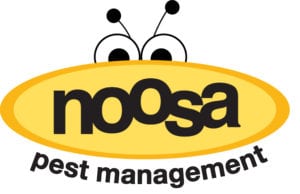Bed Bugs in the Workplace: Everything You Need to Know

It’s a common misconception, thanks largely to the name, that the problem of bed bugs is confined to the bedroom. During the course of the last decade or so, there have been a number of high-profile bed bug ‘epidemics’ in America. And one of the hardest areas to treat is the workplace. Because they could be brought in – repeatedly – by anyone. And they can be carried away by everyone. Where do you even start if you want to tackle bed bugs at work? And how do you know if it’s even bed bugs that you’re dealing with, and not some other biting insect? Here’s everything you need to know.
How to Deal with Bed Bugs in the Workplace
What are bed bugs?
Bed bugs are small, parasitic insects that have lived alongside humans for pretty much as long as there have been humans to live alongside. They are usually about the size and shape of an apple seed and brown in colour. They are reliant on human blood and will make their home anywhere that humans live. Largely in soft furnishings, but also in other kinds of furniture that will provide them with a hiding space. With padded chairs, carpets, desks and cabinets aplenty, as well as a regular source of food, offices provide the perfect habitat.
How do you know if you’ve got bed bugs at work?
The first indication that you might have a bed bug problem within your business will probably be team members complaining about bites. Although the adults aren’t so small as to be indiscernible to the naked eye, bed bugs are quite secretive and very good at hiding. So, you may not notice them as you look around your workspace. But if you carry out a bed bug inspection, you may spot other tell-tale signs.
- Blood spots. Bed bugs will often leave blood spots behind on furnishings after they have finished feeding. Other biting insects do the same. But if you see this, then you can be pretty certain that you have some kind of problem.
- What goes in must come out. And bed bugs are no exception when it comes to fecal matter. Their droppings usually look like tiny dark streaks.
- Shed exoskeletons. As bed bugs grow, they shed their skins. These look like yellowish, translucent shells.
- A sweet, musty odor. This can be hard to detect in larger spaces. But if you’re working in a smaller office, then it could be quite apparent.
- Female bed bugs are egg machines, laying daily throughout their lives. The eggs are small and whiteish and can be found in singles, or clusters of up to five.
What do bed bug bites look like?
Bed bugs aren’t fussy. They will bite anywhere on the body. The bites appear as small, pink bumps with a lighter center. Sometimes a blood spot will be in the very middle. They will be itchy and often have a burning sensation. Bed bug bites usually form in clusters or zigzags as the insect moves to new feeding sites. If an allergy occurs, blisters or hives may develop.
In most cases, bed bug bites are harmless, if irritating. The do not carry diseases. And they don’t possess dangerous venom. But allergies are not unknown. So, if a team member experiences any of the following, you should seek medical attention immediately.
- difficulty breathing
- blisters
- fever
- feeling nauseous or flu-like
- swollen tongue
- irregular heartbeat
How can you deal with a bed bug infestation in the workplace?
If you’ve found signs of bed bugs in your place of work, it is possible to handle the problem yourself. Contact sprays and bed bug powders are available in most hardware stores. The difficulty here is two-fold.
- You have a duty of care to your employees and customers. If you’re even the slightest bit doubtful, you don’t want to be messing around with potentially toxic insecticides.
- Unless you are absolutely thorough, you’re fighting a losing batting. Leave behind just one bug – or even one egg – and you’re back to square one.
A qualified pest control expert will inspect your premises and find the right solution for your business. Safely. And effectively.
If you think that your business has a bed bug problem, contact Noosa Pest Management today. We’ll provide a tailored service to debug your workplace as discreetly and quickly as possible.

Fred Wingate
Chief Bugman
Fred Wingate is the dedicated Owner and Chief Bugman at Noosa Pest Management, a thriving pest control company in Charlotte, NC. He established the company in 2006 with a vision to provide exceptional pest management services to the local community. By staying up-to-date with the latest advancements in pest management and fostering a culture of continuous improvement, he ensures that Noosa Pest remains at the forefront of the industry.
Not only is Fred deeply invested in the well-being and satisfaction of his clientele, he is also passionate about supporting the local community, including schools, churches, and other organizations. The future of our community is important to Noosa Pest, and proudly contributes to its growth and prosperity.
